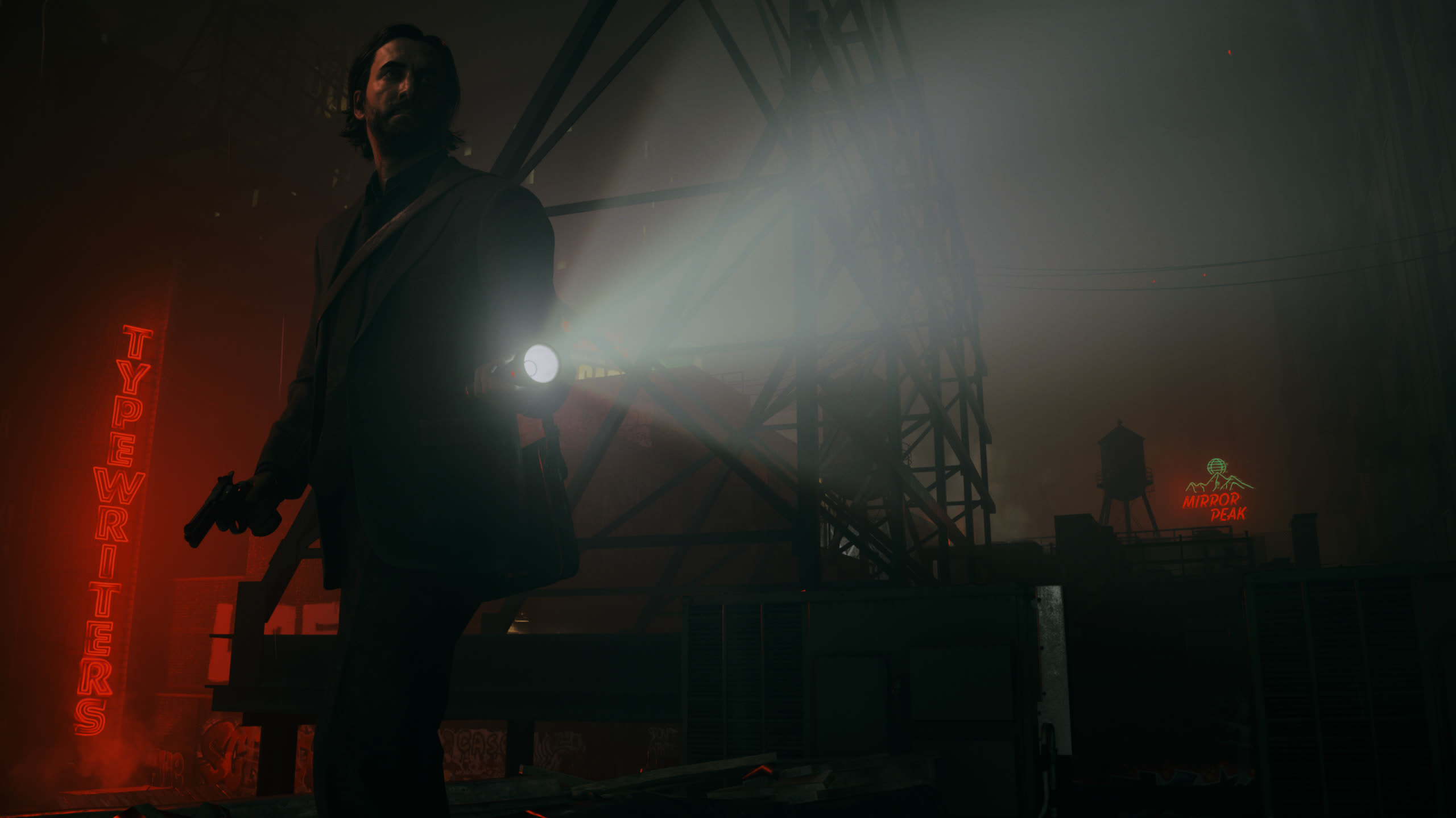The big picture: A Remedy developer raised alarms upon admitting that Alan Wake 2 doesn't officially support graphics cards older than Turing and RDNA 2. Early post-launch testing shows that GPUs predating mesh shaders will still boot the game but with generally unacceptable performance. For example, cards like the Radeon RX 5700 XT and GeForce GTX 1080 Ti fare far worse than weaker GPUs from later generations.
If you are using a graphics card older than Nvidia's RTX 20 or AMD Radeon RX 6000 series, you will need to upgrade if you want to play the PC version of Alan Wake 2 – even if it's an enthusiast-tier model. Benchmarks following the game's launch have uncovered why and explain the somewhat shocking system requirements.
According to the spec sheet, Alan Wake 2 requires an RTX 2060 or Radeon RX 6600 at the absolute minimum. Someone with a GTX 1080 Ti or Radeon 5700 XT might surmise that those GPUs can handle the game because the aging flagships perform similarly to their mainstream successors in most other titles. However, Alan Wake 2 isn't like most other games.
Shortly before launch, a Remedy developer explained that the game doesn't officially run on GPUs that lack mesh shader support. The developer later deleted the tweet due to immediate backlash, much of it likely from users afraid that their older GPUs wouldn't run Alan Wake 2 at all.
TechPowerUp and Digital Foundry successfully started the game on cards like the 5700 XT, but encountered a dialog box warning that the hardware doesn't support all critical features. Players can dismiss the notice and proceed, but suffer a significant performance cost.
Multiple outlets found that the Radeon 5700 XT and GeForce 1080 Ti – the most robust GPUs without mesh shaders – struggle to reach 30 fps at native 1080p on the lowest graphics settings. Newer cards that support mesh shaders but typically perform similarly or worse in other games, like the RTX 2060 or GTX 1660 Ti, manage Alan Wake 2 noticeably better.
All hope may not be lost for users unable to upgrade beyond Pascal or RDNA 1. Remedy admitted that modders could theoretically add support for technologies preceding mesh shaders, but results may be limited.

Remedy's use of mesh shaders probably play a significant factor behind the title's impressive level of geometric detail, which remains apparent at medium and low settings. Mesh shaders allow games to cull polygons players can't see using techniques that are newer and more advanced than vertex or geometry shaders, thus conserving horsepower more efficiently for the remaining visible polygons.
Requiring new technologies to play the most advanced PC games is natural as times change. Despite the enduring popularity of some GeForce GTX 1000 series GPUs on Steam surveys, the cards are six years old, so it shouldn't be surprising if the time for playing high-end games on them is ending. The situation regarding Radeon 5000 series is somewhat more concerning because that generation is only around four years old.
Meanwhile, users with newer mid-range cards like the GeForce RTX 3070 or Radeon RX 6700 XT probably shouldn't worry about Alan Wake 2's performance overall. The game's most demanding ray tracing settings may be out of reach, but the medium and low presets without ray tracing still look great.
Digital Foundry explains that all of Alan Wake 2's graphics settings, including the lowest, employ advanced features like global illumination and software-based ray tracing akin to Unreal Engine 5's Lumen system. Furthermore, the PlayStation 5 version achieves 60 frames per second by combining the PC edition's medium and lowest settings in 1440p with FSR 2 set to balanced mode.
Alan Wake 2 is undoubtedly an advanced, demanding game, but it is playable on a broad range of recent hardware.